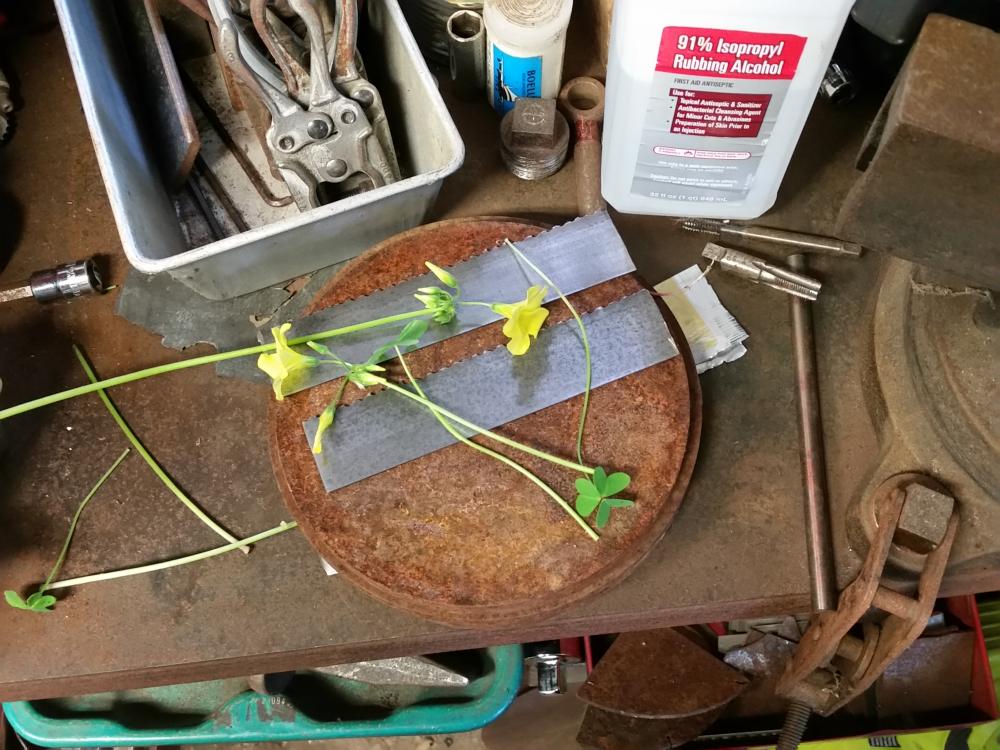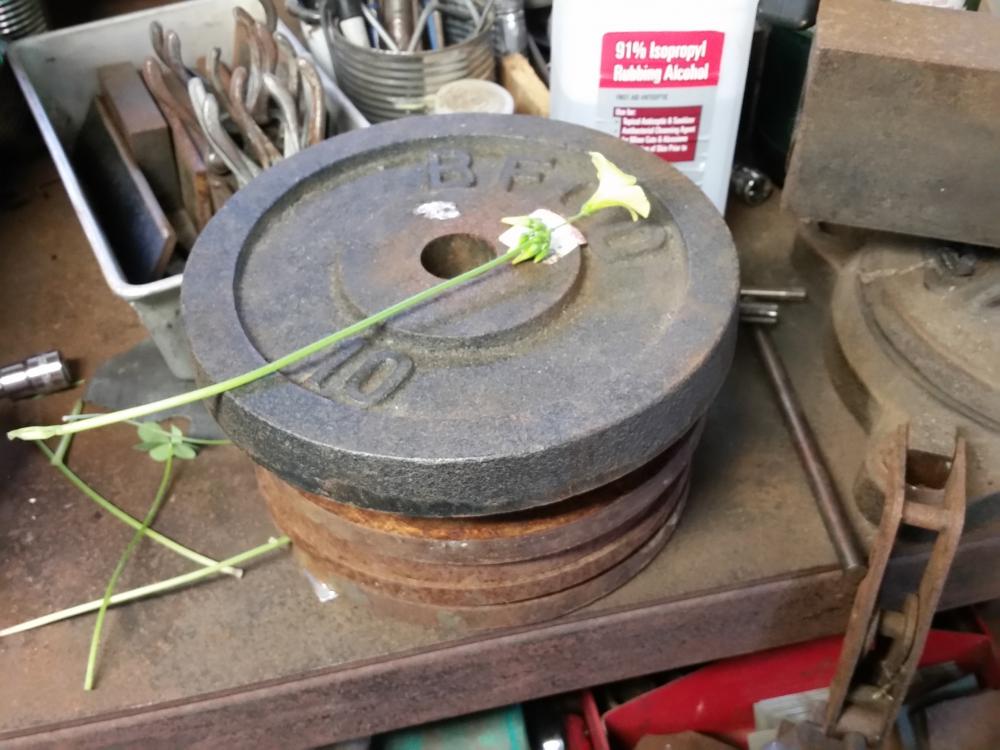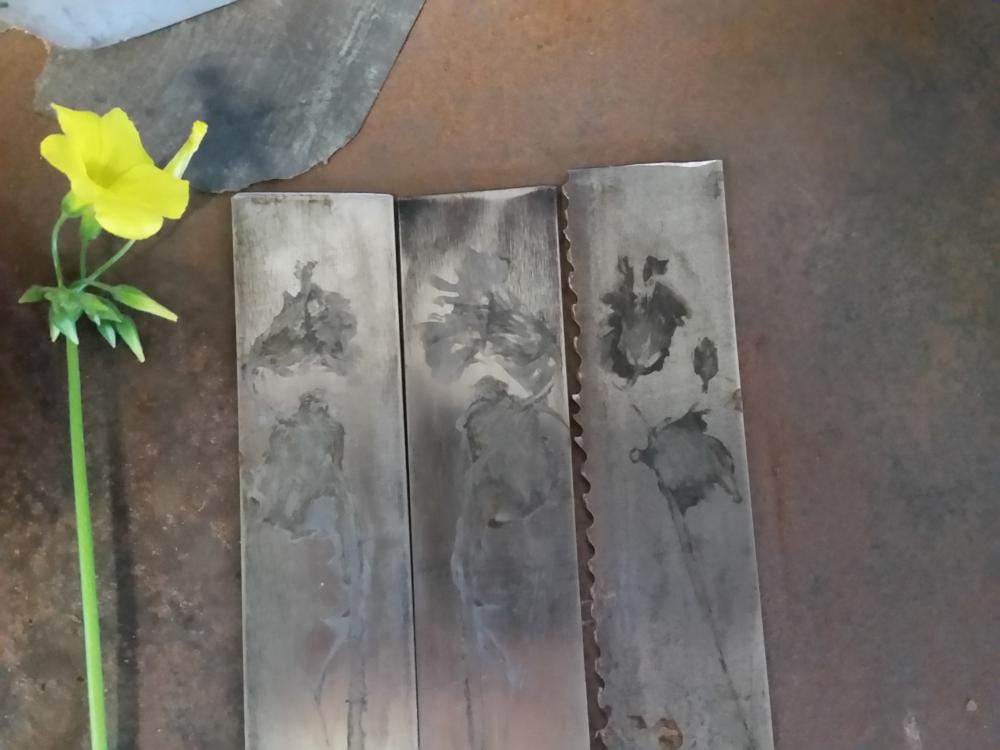-
Posts
1,746 -
Joined
-
Last visited
Content Type
Profiles
Forums
Articles
Gallery
Downloads
Events
Everything posted by Anachronist58
-
Yes, the modelling clay will work well for my upcoming test build. Thanks for the reveal. Robert Taylor
- 15 replies
-
Moderation good fellow, you don't want kidney stones! The eroded remnants of an ancient strange, er, range? Robert Taylor
-
The Sierra Madre, upon whose shoulder I sit, is rising at the rate of one centimeter per year!
-
An occasional salad from my local species is not out of the question, as I tend to graze conservatively upon it when it pokes up this time of year or after any significant rain event. My Mrs. Loves the silly yellow flowers vased on her windowsill, but has no love for the flavor. Livestock, (sheep) I have read, have been killed by delayed-onset renal failure, after gorging on the plant. So Avast ye tasters of things growing wild! I have my own views on Continental Evolution, but I am supposed to be preparing for the evening shift. Have at it. For me, geographically, it is North, Central, and South, America. Robert Taylor
-
Thanks all for your input! Thanks Frosty, I can hear Mrs Taylor now - "Robert! Your 2 liter bottles full of rotting plants are exploding in the driveway!" Seriously though, thanks for the stimulus. Yes, JHCC, and as a special etchant for detecting carbide precipitation in certain stainless steels. The etymology of Oxalis Acetosella would take some time to run down, if it could be traced to its origin at all. My species is O. Pes Caprae, Oxalis from the Greek/Latin, sour/sharp; Pes Caprae: foot (of) goat. With 900+ species of Oxalis, one could spend a lifetime investigating why Og named this one this, and Sven named that one that. "The preparation of salts of oxalic acid from plants had been known, at the latest, since 1745, when the Dutch botanist and physician Herman Boerhaave isolated a salt from sorrel.[7] By 1773, François Pierre Savary of Fribourg, Switzerland had isolated oxalic acid from its salt in sorrel.[8]" - Wikipedia. Andres Bello, even in Argentina, there is a good chance that a wood sorrel lives near you. It is a Globally invasive genus. Gourd-Beacon, this was a very rushed and clumsy experiment. Were I to do this up proper I would lay down the plants more carefully, and introduce Oxalis juice concentrate through capillary wicking from a syringe. Also a high polish may surely be beneficial for good contrast. As seen on the strip of commercial bandsaw blade, which needed more sanding. All done with cast-off 400 grit wet/dry silicon carbide. Not shown is sheet metal gleaned from a beverage can, the interior of which was folded over the Sorrel. The ceramic surface showed no evidence of etching (under no magnification). Samples were pressed as shown for 48 hours. I also drew freehand on my rusty hardy anvil, which made a nice figure. Remember, water alone will etch steel, so consider that to be a bugaboo in this poorly controlled experiment. Robert Taylor
-
Andres Bello, I believe you are referring to the wood sorrel, 'Oxalis Acetosella'?
-
So, the Latin name for this plant reveals its significance to some very specific metallurgical uses.
-

2017 California Blacksmith Assoc. Spring Conference
Anachronist58 replied to Chinobi's topic in California Blacksmith Assoc
Well, as fate would have it, the first day of the Spring Conference is the day Mrs Taylor is to have her knee replaced . I was quite looking forward to the event, and also hoping to check out the tailgaters for a fly press. Please anyone attending, strike an anvil or two a few hundred times for me. Robert Taylor- 7 replies
-
- california
- cba
-
(and 3 more)
Tagged with:
-
Here's the rundown: https://www.iforgeiron.com/topic/1085-show-me-your-anvil/?do=findComment&comment=518427 Robert Taylor
-
Yes That's a wood sorrel. Yes. But it gets a bit more interesting.
-
Sweet 26 pounder. Sweet 200 pounder. I would pay $200 for the 26 pounder, but only because I covet it and I don't know better. I think you could get the same or more on eBay. Had I not just acquired my dream Soderfors, I would be seething with envy right now. Robert Taylor
-
Every now and then I shun my endless responsibilities, and do something fun, on a whim. Does anyone care to comment on what is happening, based upon the empirical evidence shown in these photos? The particular species of plant is key. Cheers, Robert Taylor
-
In our thoughts and prayers, Robert and Sheila Taylor
-

Wood pellets for forge fuel
Anachronist58 replied to ronwend523's topic in Solid Fuels: Coal, Coke, Charcoal, Wood, etc
Yep, wood pellets are yucky. Robert Taylor -

Wagon parts find
Anachronist58 replied to jlpservicesinc's topic in Blacksmithing, General Discussion
We Humans are such odd critters........... -

Opinions on Big Box floor drill presses?
Anachronist58 replied to RogueRugger's topic in Drills, Post drills, Mag drills, etc
Yep Thomas, I am thinking 200 RPM at most for the bottom end? I'd take 50 RPM if I could find it. Plus check for smooth quill travel for good feed handle feedback. -
All of the above, and luscious texture. I have been looking for twenty minutes now. Thanks for showing us. Robert Taylor
-

Wagon parts find
Anachronist58 replied to jlpservicesinc's topic in Blacksmithing, General Discussion
Much appreciated, Thomas! -

Wagon parts find
Anachronist58 replied to jlpservicesinc's topic in Blacksmithing, General Discussion
I was born on the wrong planet, and I am not being cheeky - great find, jlp. Robert Taylor -
JHCC, wonderful to hear. All our best to you and yours, Robert and Sheila Taylor
-

Recovered items, put to a new use.
Anachronist58 replied to Glenn's topic in Blacksmithing, General Discussion
Yep got quite a few of them, got a four-stack strapped together on a furniture dolly - one of them (at a time) even contains kitty litter! Robert Taylor -
Disgusting.
-
I would not smooth the jaws, as with most of my vises I like to have them smooth or serrated depending upon the the type of work being done. Just so easy to make slipemons. Robert Taylor
-
Very nice Woof, I would carry that. Robert



